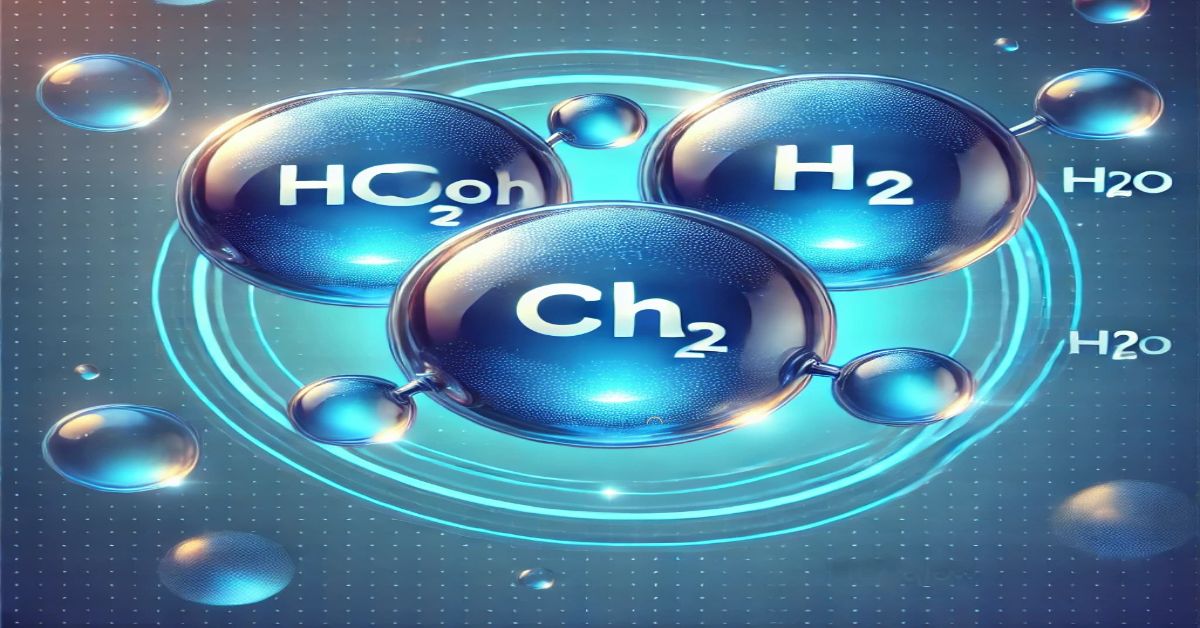hcooch ch2 h2o is a chemical compound that has garnered attention for its interesting structure and role in various chemical processes. While this molecular combination might seem complex at first glance, it plays a significant role in different fields of chemistry, ranging from organic synthesis to industrial applications. In this article, we will explore the meaning behind hcooch ch2 h2o, its properties, and its uses in diverse chemical and industrial reactions.
What Is hcooch ch2 h2o?
hcooch ch2 h2o is a molecular formula that represents a specific organic compound. The formula consists of several components that, when broken down, reveal the chemical makeup of the substance:
- hcooch refers to the ester group, specifically the ester of formic acid.
- ch2 is a methylene group, a carbon atom bonded to two hydrogen atoms.
- h2o represents a water molecule.
This composition indicates that the compound is an ester (from the hcooch group) attached to a methylene bridge (ch2) and associated with a water molecule (h2o). The presence of the ester functional group makes this compound an important part of esterification reactions and various organic syntheses.
The Chemistry of hcooch ch2 h2o: How It Reacts
Esterification Reactions and hcooch ch2 h2o
One of the most notable characteristics of hcooch ch2 h2o is its ability to participate in esterification reactions. These reactions occur when an alcohol reacts with a carboxylic acid, forming an ester and water as byproducts. For hcooch ch2 h2o, the ester group (hcooch) is derived from formic acid, which reacts with an alcohol or other reactants to form various products depending on the reaction conditions.
The water molecule (h2o) in this case plays an essential role in the reaction, often appearing as a byproduct of esterification. In laboratory settings, hcooch ch2 h2o can be used as a reactant in the synthesis of other esters, contributing to the production of a wide range of organic compounds used in pharmaceuticals, cosmetics, and even food industries.
Hydrolysis of hcooch ch2 h2o
Another important reaction that involves hcooch ch2 h2o is hydrolysis. During hydrolysis, the ester bond in the molecule is broken by water, resulting in the formation of the corresponding acid and alcohol. In this case, hcooch ch2 h2o can be hydrolyzed to produce formic acid and methanol.
This process is significant in both laboratory research and industrial processes, where hydrolysis can be used to reverse esterification reactions or produce specific chemicals needed for further synthesis.
Industrial and Chemical Applications of hcooch ch2 h2o
Role in Synthesis and Catalysis
One of the primary applications of hcooch ch2 h2o is its role in organic synthesis. The compound acts as an intermediary in various reactions that require the formation of esters. These esters are important in the production of solvents, plasticizers, and fragrances. hcooch ch2 h2o serves as a building block in creating other more complex chemical products that are widely used across different industries, including the pharmaceutical and chemical industries.
Furthermore, hcooch ch2 h2o can be used as a catalyst in certain organic reactions. Its ester functional group allows it to catalyze esterification and hydrolysis processes, making it valuable in the production of other chemicals that require precise control of ester and alcohol reactions.
Use in Polymerization and Coatings
In the realm of polymer chemistry, hcooch ch2 h2o can be used as a monomer or reactant in the production of various polymers. These polymers are often used as coatings for industrial and consumer applications. hcooch ch2 h2o participates in polymerization reactions where it can combine with other monomers to create large molecules with desirable properties, such as resistance to moisture or heat.
The versatility of this compound makes it a useful component in the development of coatings for materials that need to be protected from environmental factors, such as metal surfaces exposed to rust or plastics that need UV protection.
The Environmental Impact of hcooch ch2 h2o
Biodegradability and Environmental Safety
A key aspect of hcooch ch2 h2o is its biodegradability. Due to its molecular structure, this compound can be broken down by natural processes, making it a safer alternative to some synthetic chemicals that persist in the environment. The biodegradability of hcooch ch2 h2o means it is less likely to accumulate in soil or water sources, making it a more environmentally responsible option for industrial use.
As industries move towards more sustainable practices, hcooch ch2 h2o is increasingly being used in formulations that reduce environmental toxicity. It is important for chemical companies to consider the environmental impact of their processes, and using compounds like hcooch ch2 h2o helps mitigate the harmful effects of chemical waste.
Recycling and Waste Reduction
In industrial settings, the ability to recycle and reduce waste is a growing concern. The hydrolysis reaction involving hcooch ch2 h2o plays a role in recycling efforts. Since hydrolysis can break down esters into their constituent acids and alcohols, it provides a pathway for reclaiming valuable chemicals. By employing hcooch ch2 h2o in these processes, companies can reduce waste and improve the efficiency of their operations, which leads to cost savings and environmental benefits.
Research and Future Directions for hcooch ch2 h2o
The future of hcooch ch2 h2o lies in its potential to play an even greater role in sustainable chemistry. As researchers continue to explore more efficient ways to utilize this compound, the applications for hcooch ch2 h2o in green chemistry and renewable energy will likely increase. Its role in esterification, hydrolysis, and polymerization processes can be fine-tuned to meet the demands of more eco-friendly industrial practices.
Furthermore, scientists are studying ways to use hcooch ch2 h2o in the development of bio-based products that can replace petroleum-derived chemicals. This shift is part of a larger trend in chemistry and manufacturing, where industries are moving toward renewable, bio-based materials that can contribute to a more sustainable future.
Conclusion: The Versatility and Importance of hcooch ch2 h2o
From its crucial role in esterification reactions to its use in polymerization processes, hcooch ch2 h2o is a compound of significant chemical and industrial value. Its biodegradability and potential for use in sustainable practices make it an important compound in today’s chemistry landscape. As industries continue to seek greener, more efficient solutions, hcooch ch2 h2o stands as a prime candidate for future innovations in chemistry and materials science.




